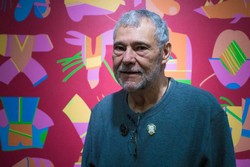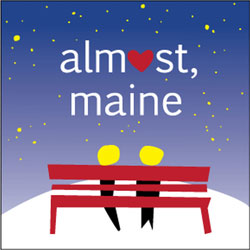At the entrance to the “A Judgment of War” art exhibit in the library, a quote by the artist, Jacob Landau (whose selected works have been on display there since April 10) reads: “I am interested in art as advocacy of the human, as revelation of the tragic, as hope of transcendence.”
With just 12 works in total, the exhibit may seem humble. But those 12 works by Jacob Landau, including his lithographs, wet pastels, and woodcuts, are all the exhibit needs to materialize the humanist artist’s aforementioned quote. Works touching on human existence, the tragedy of war, and the hope of peace each wield a unique ability to deliver a powerful, thought-provoking punch to the viewer.
A majority of the works in “A Judgment of War” depict images of the Holocaust (appropriate, considering Landau hailed from a Jewish family), as well as Dante’s circles of Hell. Most of the lithographs and woodcuts with these themes are rendered in black, white, or grayscale, which complement the dark material and comment on the black, white, and gray areas of good, evil, and morality.
One such work is a lithograph titled “The Geography of Hell,” from the Holocaust Suite of Jacob Landau. With overlapping clusters of bodies, haunting faces, and cavernous eyes, the artwork allows the viewer from the outside of the frame to look in on the chaotic scene and feel a kind of detached sorrow for the tortured, fearful subjects—the Jews during a terrible period in the world’s history.
A very different piece, a wet pastel titled “The Four Horsemen of the Apocalypse,” stood out most prominently in the exhibit for its large size and wide range of colors, which stood in stark contrast to monochromatic pieces like “The Geography of Hell.” Although the pastel does not betray any overtly religious images, it is actually a vibrant rendering of a story in the last book of the New Testament of the Bible in which Jesus opens four of seven seals on a scroll in God’s right hand, summoning riders on white, red, black, and pale horses. These horses are said to symbolize conquest, war, famine, and death, respectively, and their riders are meant to be the harbingers of the Last Judgment.
The pastel channels the biblical story into its abstract conglomeration of overlapping horse heads, hooves, warrior heads, and swords, among other image outlines. This somewhat confusing mixture cleverly imitates the disorienting chaos of the event, and the apocalyptic theme challenges the viewer to take a look inside and reflect on their own morality.
“The Sniper” provides a change of pace from the more abstract works in the exhibit with its comic book design. The eponymous subject dons a Robin Hood-like costume and wields a gun, his word bubble referring to a deceiving fascist enemy, Signor Barezzi: “There is an old adage which says, ‘those who live by the sword…will perish by the sword.’” The comic—more heartrending than amusing—evokes the struggle of the common man against evil, especially that of the Jews during World War II.
With these three pieces alone, it is easy to see that there is a common thread of themes but different ways of materializing them. This is a testament to Landau’s talent.
For this reason, if you have the opportunity to visit the exhibit while you are in the library, you should not pass it up. Surrendering your attention—even if just for a moment—to the artistry and imagination of Jacob Landau cannot only be a much-needed temporary break from writing papers and pouring over textbooks as finals loom on the horizon, but also a thought-provoking journey that might permanently change your perspective on war, peace, existence, and morality.
Of course, for some it may be challenging or tedious to explore the complex, heavy topics that Landau presents in his work. If this is the case, the variety of pieces at the exhibit are nice to look at if nothing else, and it is easy to absorb and enjoy the masterful technique behind the use of lines, symmetry, and colors in the artwork without investing too much thought or emotion.
With that being said, head over to “A Judgment of War” this week to make your own judgment of Landau’s various works of art, before it’s too late.
“A Judgment of War” is part of the Global Understanding Convention (GUC). Landau’s work has been annually exhibited at the University as part of the GUC for the last five years. It is on display in the Library Seminar Room until Friday, April 25. To immerse yourself even further in the experience, you can participate in a docent tour by contacting Professor Susan Douglass for times. If you need any more convincing, it’s completely free.


